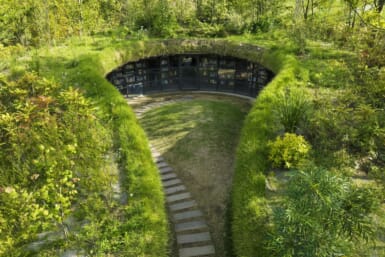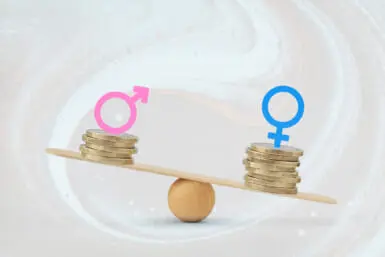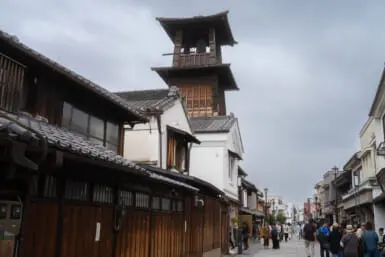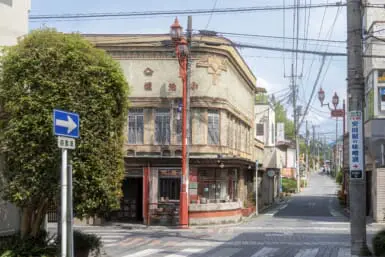by Rick Kennedy
A Visit to a Pachinko Parlor
Pachinko is as much a part of life in Tokyo as slot machines are in Las Vegas. There can’t be many Tokyoites who have never risked a few hundred yen in a pachinko parlor, of which Tokyo has over 1,500, enough to make them the city’s single most characteristic feature.
Foreigners peering into a pachinko parlor for the first time are always taken aback by the din: the slur of thousands of steel balls swirling through the system, the blare of a Sousa march, the overamplified announcements that MACHINE 136 HAS JUST CAUGHT FEVER!!! (Earnest visitors from China have been known to inquire of a pachinko parlor what they are manufacturing that makes so much noise.) It is the chaos of combat, another world.
Not only are foreigners apt to be stunned by the fury of a pachinko parlor in full cry, but when they observe hundreds of pachinko players crammed together shoulder to shoulder, staring with maniacal intensity at the vertical pinball machines only inches from their noses, they are tempted to conclude that they have stumbled onto something uniquely, weirdly Japanese.
A self-styled explicator of The Japanese Mind once declared that it was impossible to understand Japan without undersanding pachinko. This is, of course, the most awful humbug, Pachinko is gambling, and its ubiquitous presence makes Tokyo the gamblingest city in the world. (Total annual pachinko revenues are 7 trillion yen. Compare this with the total value of all video tape recorders produced in Japan in 1986 of 3 trillion yen.) Pachinko is popular because it offers at little cost a momentary escape from a workaday world, not because it puts people in a zen-like trance.
But it is true that if you disdain pachinko parlors because you see them as somehow vulgar, you deny yourself an experience that is uniquely Japanese. The game has never caught on outside Japan, despite several attempts to export it.
The great deterrent for foreigners is that the game seems impossibly arcane. I mean to address that problem here. Read the next few paragraphs and you will know as much about general strategy as all but the “pachipros“—the pachinko professionals who live off the game. Whatever analysts of The Japanese Mind may say, it is true that until you have bankrupted a pachinko machine you can never understand the deepest inner yearnings of a native of this city.
How To Play The Game
1. Pick your parlor — In the past, there was some evidence that the odds were fractionally better at neighborhood pachinko parlors than at parlors located near the major stations. The rationale was that the local parlors had to cater to a fixed clientele which would not keep coming back unless they felt they were being given a reasonable shot at the jack pot, while the more centrally located parlors catered to a transient clientele who never really got to know the parlor. This potential edge no longer exists, however, as both parlors and players, as well as the game itself, have become more sophisticated.
Now the odds offered by parlors are very similar, although parlors which have just opened will initially adjust their machines for more generous payoffs in order to establish as quickly as possible the essential aura of action. One occasionally comes across a parlor which has managed to attract only a few customers, even during the peak playing hours of 12-1 and 6-8. These are eerie places best avoided.
For the beginner as well as for the pro, the best parlors to play in arc the most popular parlors, assuming they are not so crowded that you cannot have a reasonable pick of machines. Two flagship parlors are the Shinjuku New Tokyo, which has the highest turnover in the city, and the New Miya-ko Center, which with 500 seats (the legal limit in Tokyo) is the city’s largest. Both parlors are at the West Exit of Shinjuku Station.
Novelty parlors — such as the 26 Go-Sen in Musashi Koyama, which has a concert hall to which players in a slump can retire to wait it out, and the Sequoia in Nakano, where hostesses roam the aisles offering fruit juices, bonbons and encouragement — are not in favor with dyed-in-the-wool pachinko players, who tend to be suspicious of embellishments. Still, if you feel fastidious, you may find that the elegant new Jumbo off Miyamasuzaka near Shibuya Station is worth a visit: it is immaculate and provides hot oshibori at the end of play.
2. Pick your time—Payday in Japan is the 25th of the month. Just before payday the parlors tend to be more generous than usual in order to egg on players with only a residue of loose change left in their pockets. Similarly, after a weekend or a long holiday, the machines tend to be more generous.
It is instructive to line up outside a parlor at 10 in the morning. When the doors open the “pachipros” (it is said that each parlor supports two or three professionals) will rush down the banks of machines in search of a soft touch. You are not likely to be able to judge the ripeness of a machine with the same practiced eye, however, and you will find that after the machines have been in play for several hours it will be more apparent which machines are more likely to pay off. Particularly good times to put in an appearance, for reasons explained below, are 1,6 and 8 p.m. It is also said that a sudden rainstorm in the afternoon after a hot dry morning can warp the plywood in the back of the machines in such a way that the odds are raised in favor of the players, but I suspect this is just another example of the extensive folk analysis to which pachinko has been subjected over the years.
3. Pick your machine — It is a pachinko maxim that a fool can win on the right machine but that even a pachinko genius cannot win on the wrong one. There are essentially four types of machines currently in play, although the three major manufacturers are very inventive, putting dozens of new variations on the market each year. (We will shortly see a whole new approach to the game when the manufacturers incorporate video discs, computer circuitry and voice reproduction.)
Beginners should get their feet wet on hikoki (“airplane”) type machines, which are designed to provide maximum action per 100-yen investment in 25 balls and which, although they do not pay off as spectacularly as some other types of machines, offer the best odds for players who have not taken the time to memorize a long sequence of numbers and who do not have the reflexes of a world-class Ping Pong player, as is required to win on the “digipachi” (digital pachinko) machines which incorporate a slot machine, for instance.
Hikoki-type machine is called “airplane” type because when a ball falls into one of the three cups at the bottom of the board marked “1” or “2” the “wings” open up for 1 or 2 intervals of 0.7 seconds, in order to make a machine “catch fever,” that is to start its up to 1,300-ball payoff (the legal limit for this type of machine) while flashing all manner of lights, it is necessary to slip a ball into the center V-Zone while the wings are open. Once you do this the full payoff is pretty assured, although if by some awful miscalculation you do not manage the comparatively easy task of feeding seven more balls into the V-Zon during the fever period while the wings are opening and closing, the fever will stop and the payoff will be reduced.
Every parlor has at least one bank of hikoki machines. They are the parlor’s asobidai, the machines designed to attract average player, although some pachipros do specialize in these machines. Within this bank of machines, how do you locate the machines most likely to pay off? The pachipros do it by analyzing the alignment of key pins, sometimes with a gauge but more often just by eye-balling the machines, but the process is very complex and takes considerable experience.
It is better for you to pick your machine simply by tracking its recent history. Machines that have paid out at least once during the day are hung with a sign which says “Kaihodai” — “Liberated (winning) Machine.” In the absence of other evidence, one of these machines is what you want, if you can find one not already in play. Machines which have paid off at least once and which management suspects of being too generous have a “Uchidomedai” — “Bankrupted Machine*’ — sign hung on them.
In order to drum up business, the parlor will often at 1 and 8 and sometimes at 6, turn the Uchidomedai machines, which are not playable, into Kaihodai machines, which are, so at these hours players looking for a sure thing line up at the administrative desk in the back of the parlor to be allowed to slip into a seat before one of these proven machines.
Actually, relatively few players resort to this stratagem, because it is considered too timid a strategy for a real pachinko player. Most players prefer to take a chance on their ability to eye-ball nail clearances themselves in order to zero in on a hot machine.
If you have established that a particular machine has a record of paying off, you might want to make a note of it, even though, particularly in a neighborhood parlor, the nails may be realigned overnight by a kugi-shi (“nail doctor”), a professional nail adjuster. Machines in more centrally located parlors tend to have their nails adjusted less frequently.
4. Play the odds — Now that you have seated yourself before a potentially winning machine, buy 300-yen worth of balls and put them in your upper tray.
Look carefully at the nails immediately above the three lower cups and determine if either the left or the right “I” cups have a particularly inviting space between the nails. Turn the shooting control clockwise until balls start shooting up to the top of the machine. Aim for the left or right side of the top row of nails (ten kugi or “heavenly nails”), depending on whether you have a better shot at the right or left “1” cup. Observe the fall of the balls and make adjustments as seems appropriate, but note that variations in the voltage as well as irregularities in the balls themselves will insure that the balls fall in a variety of patterns—you will have to play the odds.
You should hit a lower cup or one of the side “tulips” at least five times for your 300-yen worth of balls, for a payoff of 13 balls each time. If you manage to do do this, and if you have picked a machine which keeps the balls in play above the wings (so that when the wings open there’s a better chance of cascading a ball into the V-Zone), it’s probably worth another 300 yen to check the machine out more thoroughly. If the machine you have chosen is not generous to this extent, be prepared to move to another.
When you have bankrupted your machine, take your plastic container full of steel balls to the administrative desk to have them counted. You can claim a prize if you like, although you are unlikely to find anything sufficiently memorable to mark the occasion—the prizes are household articles like soap, toothpaste, towels, and cigarettes (it is said that 20% of the cigarettes produced in Japan are given away as pachinko prizes) to take home to appease the wife.
More thrilling (because semi-illegal) is a payoff in cash: when you turn in your balls, let it be known that you prefer to be paid in “genkin.” You will be given some markers and told to go down a nearby alley, climb a dark staircase and present yourself at a small window in a steel door. Push your markers through the window and your booty will be slid out in exchange.








